In recent years, the contact grill market has experienced a surge in popularity, not just for its convenience but also for the delicious results it delivers. This surge is fueled by a shift in consumer preferences towards healthier cooking methods and a desire for unique, personalized kitchen appliances. As the demand for these grills grows, so does the role of custom manufacturers in shaping the industry. This article explores the benefits of collaborating with a custom contact grill manufacturer, delving into market trends, design innovations, and real-world success stories. It also examines the challenges and opportunities that lie ahead for the contact grill industry, offering a glimpse into the future of custom manufacturing in this sector.
Understanding the Contact Grill Market
The contact grill market has seen a significant surge in popularity, especially in Europe and America. To understand this market, it’s essential to delve into its origins, current trends, and future prospects. Contact grills, also known as flat-top grills or countertop grills, have become a staple in many households due to their convenience and versatility. Here’s a closer look at the contact grill market.
Historically, contact grills have been around for decades, but it was in the late 20th century that they began to gain traction. Initially, these grills were primarily used in commercial kitchens, but their compact size and ease of use made them appealing for home use as well. The market has since expanded, with manufacturers introducing a variety of models to cater to different consumer needs.
One of the key factors driving the growth of the contact grill market is the increasing preference for healthy cooking methods. Contact grills are known for their ability to cook food with minimal oil, which is a significant draw for health-conscious consumers. The market is also being fueled by the busy lifestyles of modern consumers who seek quick and efficient cooking solutions without compromising on quality.
The contact grill market is segmented into various categories based on factors such as design, material, and cooking technology. For instance, some grills are designed with non-stick surfaces for easy cleaning, while others feature adjustable heat settings for precise cooking control. There are also models that come with additional features like built-in thermometers and timers, making them even more user-friendly.
In terms of material, stainless steel remains the most popular choice due to its durability and sleek appearance. However, manufacturers are increasingly exploring other materials like cast aluminum and ceramic, which offer different cooking benefits and aesthetic appeal.
Geographically, the contact grill market is dominated by North America and Europe, with the United States and Germany leading the way. These regions have a strong base of consumers who are willing to invest in high-quality kitchen appliances. The market in Asia is also growing rapidly, with countries like China and Japan showing significant interest in contact grills.
When it comes to consumer preferences, ease of use and efficiency are paramount. Consumers are looking for grills that not only cook food evenly but also require minimal maintenance. The ability to cook a variety of dishes, from burgers and steaks to vegetables and seafood, is another important factor. As such, manufacturers are focusing on developing multi-functional contact grills that can handle a wide range of recipes.
Innovation in contact grill technology is also a crucial aspect of the market. Advancements such as infrared heating elements and ceramic-coated surfaces have improved cooking performance and durability. Smart technology is also making its way into the market, with some grills now offering Bluetooth connectivity for remote control and monitoring through smartphone apps.
Despite the growth, the contact grill market is not without its challenges. One of the main hurdles is competition from other cooking appliances, such as outdoor grills and electric skillets. Additionally, the market is subject to fluctuations in consumer demand and economic conditions.
Looking ahead, the contact grill market is expected to continue its upward trajectory, driven by the increasing popularity of healthy eating habits and the demand for efficient cooking solutions. Manufacturers will need to stay abreast of technological advancements and consumer trends to remain competitive. Investing in research and development to create innovative products that offer unique features and benefits will be key to success in this dynamic market.
In conclusion, the contact grill market is a rapidly evolving sector that is shaped by consumer preferences, technological advancements, and health-conscious trends. By understanding these factors, manufacturers can position themselves to capitalize on the opportunities and challenges that lie ahead in this exciting industry.
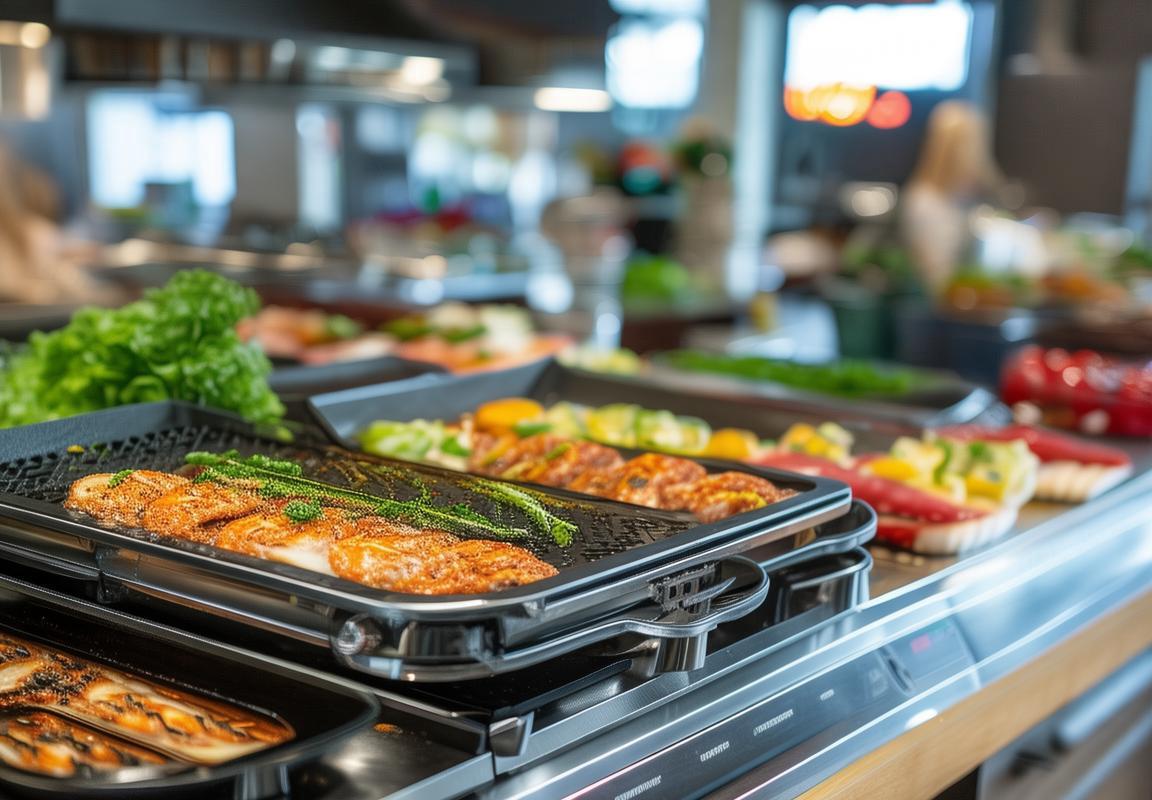
The Rise of Contact Grills in Europe and America
The Contact Grill Market in Europe and America has experienced a significant surge in popularity over the years, transforming the way consumers enjoy outdoor cooking. This upward trend can be attributed to several factors, each playing a pivotal role in the growth of this segment.
Gone are the days when grilling was a seasonal activity, reserved for the warmer months. With the advent of contact grills, also known as flat grills or countertop grills, the convenience and versatility of this cooking method have expanded, allowing for year-round enjoyment. These compact, efficient appliances have become a staple in many kitchens, both residential and commercial.
One of the primary reasons for the rise of contact grills is the convenience they offer. Unlike traditional charcoal or gas grills that require time to heat up and can be challenging to transport, contact grills can be quickly plugged in and used immediately. Their portability has made them a favorite among RV enthusiasts and campers, as well as those who enjoy grilling in small spaces or outdoor settings.
Another factor contributing to the growth of contact grills is the health consciousness among consumers. Contact grills provide a healthier alternative to traditional grilling methods by minimizing the formation of harmful compounds like heterocyclic amines (HCAs) and polycyclic aromatic hydrocarbons (PAHs). The even cooking temperature and direct contact with the grill surface help ensure that food is cooked to perfection without overcooking or charring.
The European market, in particular, has shown a preference for high-quality, stylish appliances. European consumers are known for their attention to detail and desire for innovative cooking solutions. As a result, contact grill manufacturers have responded by offering a variety of designs, from sleek, modern units to those with retro aesthetics. The market has seen a surge in the popularity of ceramic and non-stick surfaces, which are not only durable but also provide excellent heat distribution.
In the United States, the contact grill market has been influenced by a few key trends. The surge in outdoor living and the rise of backyard entertaining have created a demand for versatile cooking appliances. Additionally, the growing interest in wellness and the health benefits of grilling have prompted consumers to seek out healthier grilling options. This has led to a surge in the demand for contact grills that offer adjustable temperature settings, allowing for precise control over the cooking process.
As the market continues to grow, there is also a noticeable trend towards customization. Consumers are increasingly looking for appliances that not only meet their cooking needs but also reflect their personal style. Customization ranges from unique designs and colors to additional features like digital temperature controls and built-in timers. This shift towards personalization has opened up new opportunities for contact grill manufacturers to differentiate their products in a competitive market.
The integration of technology has also played a significant role in the rise of contact grills. Smart grills equipped with Wi-Fi connectivity and mobile app integration are becoming more common. These innovations allow users to control their grills remotely, receive notifications about cooking progress, and even adjust the temperature settings while they are away from the grill. This level of connectivity and convenience has helped to further solidify the position of contact grills as a must-have kitchen appliance.
The environmental movement has also had an impact on the contact grill market. With an increasing focus on sustainability, manufacturers are responding by producing contact grills that are energy-efficient and made from eco-friendly materials. This has not only resonated with consumers who are environmentally conscious but has also helped to differentiate products in the marketplace.
In conclusion, the rise of contact grills in Europe and America can be attributed to a combination of convenience, health benefits, design innovation, technological integration, and a growing demand for customization. As these trends continue to evolve, it’s clear that contact grills will remain a popular choice for consumers seeking a convenient, healthy, and enjoyable grilling experience.
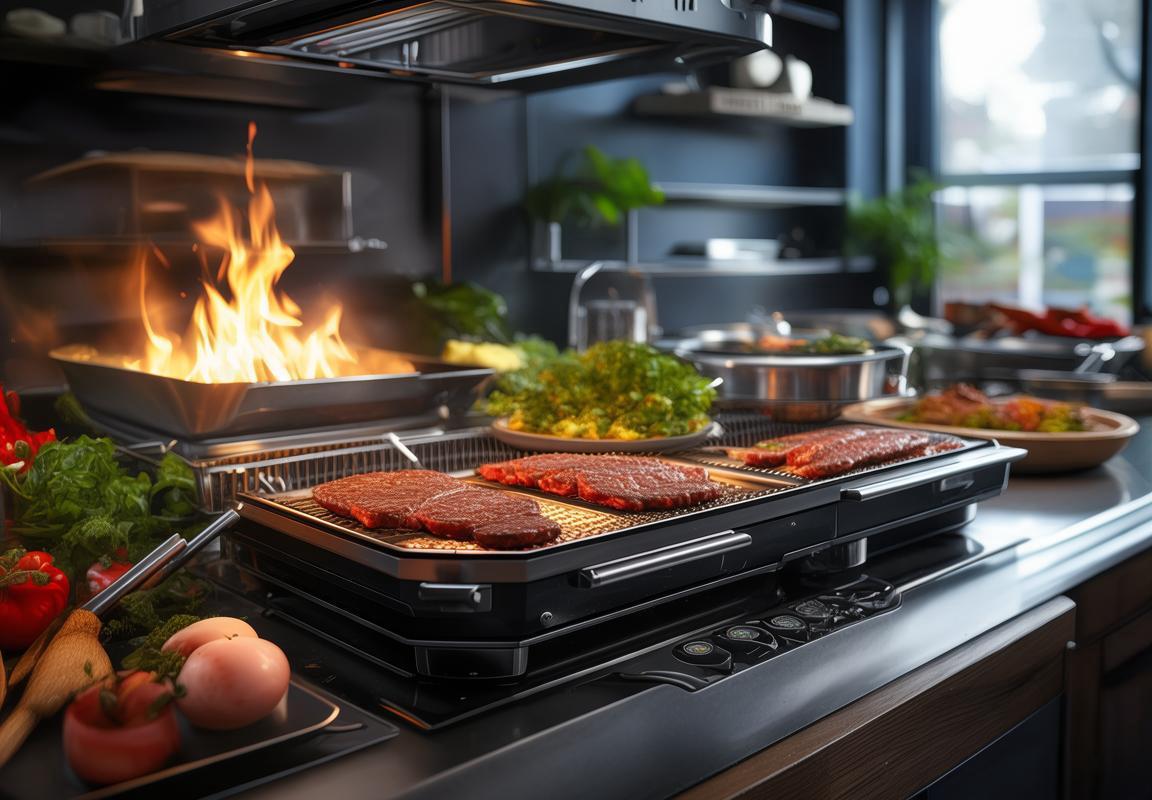
Key Features of Contact Grills
Contact grills, often hailed as the modern iteration of the classic George Foreman grill, have surged in popularity across Europe and America. These compact, versatile cooking appliances come packed with a range of key features that make them a favorite in many households. Let’s delve into the defining characteristics that set contact grills apart.
The primary feature of a contact grill is its ability to cook food by pressing two heated plates together. This unique design, inspired by the sandwich press, allows for even cooking and the development of those coveted grill marks. The sealed cooking surface not only locks in flavors but also prevents grease from splattering, making for a healthier and cleaner cooking experience.
One of the standout features of contact grills is their ease of use. These appliances are typically straightforward, with simple controls that allow users to set and maintain the desired temperature. Many models come with adjustable heat settings, giving users the flexibility to cook a variety of foods, from delicate vegetables to hearty steaks.
The compact size of contact grills is another key feature that appeals to many consumers. They are perfect for small kitchens or for those who prefer not to clutter their countertops. Despite their size, these grills are surprisingly powerful, often capable of cooking for one to four people at a time, making them ideal for both solo cooks and families.
One of the most appreciated aspects of contact grills is their versatility. They can be used to cook a wide array of foods, including sandwiches, burgers, hot dogs, vegetables, and even seafood. The flat surfaces and even heat distribution make them perfect for grilling, searing, and even baking, expanding the culinary possibilities in a small kitchen.
Safety features are also a crucial part of contact grills. Many models come with non-slip bases and cool-to-the-touch handles, ensuring that the appliance is stable and safe to use. Some models even include automatic shut-off functions, which activate when the grill is left unattended or reaches a certain temperature, providing an additional layer of safety.
The design of contact grills often reflects a focus on convenience and practicality. Many come with removable cooking surfaces that can be easily cleaned in the dishwasher, saving time and effort for busy cooks. Some models also feature adjustable legs or hinges, allowing for easy storage and transport.
In terms of materials, contact grills are typically made from durable metals like stainless steel or aluminum. These materials not only contribute to the longevity of the appliance but also enhance the aesthetic appeal, making contact grills a stylish addition to any kitchen.
Energy efficiency is another feature that cannot be overlooked. Contact grills are designed to heat up quickly and maintain a consistent temperature, ensuring that energy is used effectively. This not only saves on utility bills but also reduces the carbon footprint.
Lastly, the innovation in contact grill technology has led to the inclusion of various smart features. Some models come with digital displays that provide precise temperature control and cooking time, while others might offer features like a built-in timer or an indicator light to signal when the grill is ready to use.
In summary, the key features of contact grills make them a must-have for any kitchen. Their unique cooking method, ease of use, compact size, versatility, safety features, practical design, durable materials, energy efficiency, and technological advancements all contribute to their popularity in Europe and America. Whether you’re a seasoned chef or a novice cook, a contact grill is a versatile and efficient tool that can elevate your cooking game.
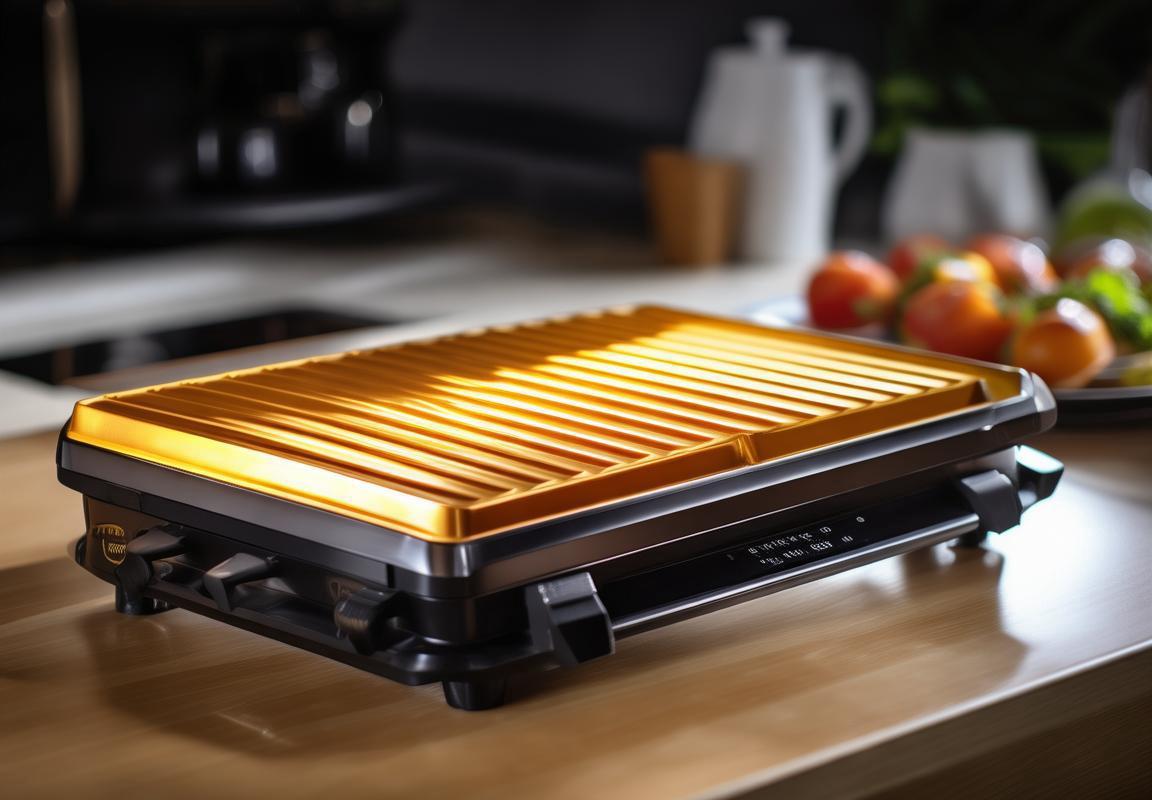
The Role of Custom Manufacturers
In the competitive landscape of the kitchen appliance industry, custom manufacturers play a pivotal role in shaping the market. These specialized firms offer tailored solutions that cater to the unique needs and preferences of both businesses and consumers. Let’s delve into the various aspects of their role.
Customization and InnovationCustom manufacturers bring a level of innovation and customization that mass-produced items often lack. They have the flexibility to design and build contact grills that not only meet specific technical requirements but also incorporate unique features that enhance user experience. This can range from advanced heat distribution systems to ergonomic designs that make cooking more enjoyable.
Sustainability and Eco-Friendly SolutionsAs environmental concerns grow, custom manufacturers are at the forefront of offering sustainable and eco-friendly contact grill options. They can source materials responsibly, integrate energy-efficient components, and even develop grills that are recyclable or made from recycled materials. This not only appeals to environmentally conscious consumers but also positions brands as leaders in sustainable kitchen appliance innovation.
Quality Control and PrecisionOne of the key advantages of working with custom manufacturers is the meticulous attention to quality control. These manufacturers often have rigorous standards that ensure each contact grill meets or exceeds industry benchmarks. From the precision of the heating elements to the durability of the cooking surface, the focus on quality ensures that the end product is reliable and long-lasting.
Market ResponsivenessThe role of custom manufacturers in the contact grill market is also characterized by their responsiveness to market trends. They can quickly adapt to new consumer demands or technological advancements. For instance, if there’s a surge in demand for larger cooking surfaces or enhanced safety features, custom manufacturers can pivot their production to meet these needs without the delays associated with large-scale production lines.
Specialized Solutions for Unique MarketsCustom manufacturers often cater to niche markets that require specialized solutions. This could include commercial kitchens that need industrial-grade contact grills, outdoor enthusiasts looking for portable grills, or even health-conscious consumers seeking grills with non-stick surfaces or adjustable temperature controls. Their ability to create these niche products is a testament to their versatility and expertise.
Customization for Brand IdentityBrands often seek to differentiate themselves in a crowded market. Custom manufacturers can help achieve this by crafting contact grills that align with a brand’s identity. Whether it’s through unique branding, distinctive design elements, or custom functionality, these manufacturers can produce grills that not only perform well but also resonate with the brand’s target audience.
Collaborative DevelopmentThe process of working with a custom manufacturer is often collaborative. These manufacturers work closely with clients to understand their vision, budget constraints, and desired specifications. This collaborative approach ensures that the final product not only meets the technical requirements but also aligns with the brand’s strategic goals and market positioning.
Flexibility in ProductionCustom manufacturers offer a level of flexibility that is often not possible with traditional mass production. They can produce small batches or even single units, which is particularly beneficial for startups or businesses looking to test the market with a limited release. This flexibility allows for more experimental and tailored product development.
Customization for Technological IntegrationIn an era where smart appliances are becoming increasingly popular, custom manufacturers can integrate technology into contact grills. This could include features like Wi-Fi connectivity, Bluetooth compatibility, or even built-in apps that provide cooking tips and recipes. By offering these advanced features, custom manufacturers help their clients stay ahead of the curve.
Customized Support and ServiceBeyond the manufacturing process, custom manufacturers often provide comprehensive support and service. This includes assistance with regulatory compliance, ongoing maintenance, and customer service. By offering this support, they help ensure that their clients’ products are not only high-quality but also well-supported throughout their lifecycle.
In conclusion, the role of custom manufacturers in the contact grill market is multifaceted. They offer a blend of customization, innovation, quality, and market responsiveness that is invaluable to businesses looking to stand out in a competitive landscape. Their ability to tailor products to specific needs and trends ensures that they remain a crucial partner in the development and success of the contact grill industry.

Benefits of Working with a Custom Contact Grill Manufacturer
In the competitive landscape of the cookware industry, partnering with a custom contact grill manufacturer can offer a multitude of advantages that can significantly impact your business. From tailored solutions to enhanced product quality, here’s a closer look at the benefits that come with working with such a manufacturer.
Customization to Suit Your BrandOne of the standout benefits of working with a custom contact grill manufacturer is the ability to create products that perfectly align with your brand identity. Whether it’s a specific design, color scheme, or logo integration, these manufacturers can bring your vision to life, ensuring that your contact grills not only perform well but also resonate with your target market.
Enhanced Product QualityQuality is paramount in the cookware industry, and custom manufacturers often prioritize this aspect more than mass producers. By focusing on smaller batches and detailed craftsmanship, these manufacturers can ensure that each contact grill meets the highest standards of quality. This attention to detail can lead to fewer defects, a longer lifespan for the product, and ultimately, greater customer satisfaction.
Innovation and Technology IntegrationCustom manufacturers are often at the forefront of innovation. They have the flexibility to incorporate the latest technologies and materials into their contact grill designs. This means that your product can offer cutting-edge features that set it apart from the competition, such as advanced heat distribution systems, non-stick coatings, and energy-efficient designs.
Cost-Effective ProductionWhile custom manufacturing might seem like a luxury, it can actually be more cost-effective in the long run. By working closely with a manufacturer, you can optimize your production process, reduce waste, and potentially lower your unit costs. This is especially beneficial for businesses looking to scale their operations without compromising on quality.
Quick Turnaround TimesWhen you need a new product to hit the market quickly, custom manufacturers can be a lifesaver. They often have the agility to accelerate production timelines, ensuring that your contact grills are ready for launch in a timely manner. This rapid response can be crucial for keeping up with market demands and capitalizing on new opportunities.
Strategic Sourcing and Supply Chain ManagementCustom manufacturers typically have well-established supply chains that allow for strategic sourcing of materials. This means they can secure the best quality components at competitive prices, which can translate into cost savings for your business. Additionally, their expertise in supply chain management can help mitigate risks and ensure a consistent supply of raw materials.
Tailored Marketing SupportA custom contact grill manufacturer can also offer valuable marketing support. From design advice to packaging suggestions, they can help you present your product in the best possible light. This collaboration can lead to more effective marketing campaigns and a stronger brand presence.
Flexibility for Future Product DevelopmentThe relationship with a custom manufacturer is not just about the current product line. It’s also about future growth and development. These manufacturers are often willing to adapt and evolve with your business, which means they can help you design and produce new products as your brand expands and customer needs change.
Customized Support and ServiceWhen you work with a custom manufacturer, you gain access to a team of experts who are dedicated to your success. They can provide technical support, answer your questions, and offer solutions to any challenges you may face. This level of personalized service can be invaluable in navigating the complexities of the cookware industry.
In conclusion, the benefits of working with a custom contact grill manufacturer are multifaceted. From product customization and quality assurance to innovation and cost-effectiveness, these partnerships can provide a competitive edge in a crowded market. By leveraging the strengths of a custom manufacturer, businesses can not only meet their current needs but also position themselves for future success.
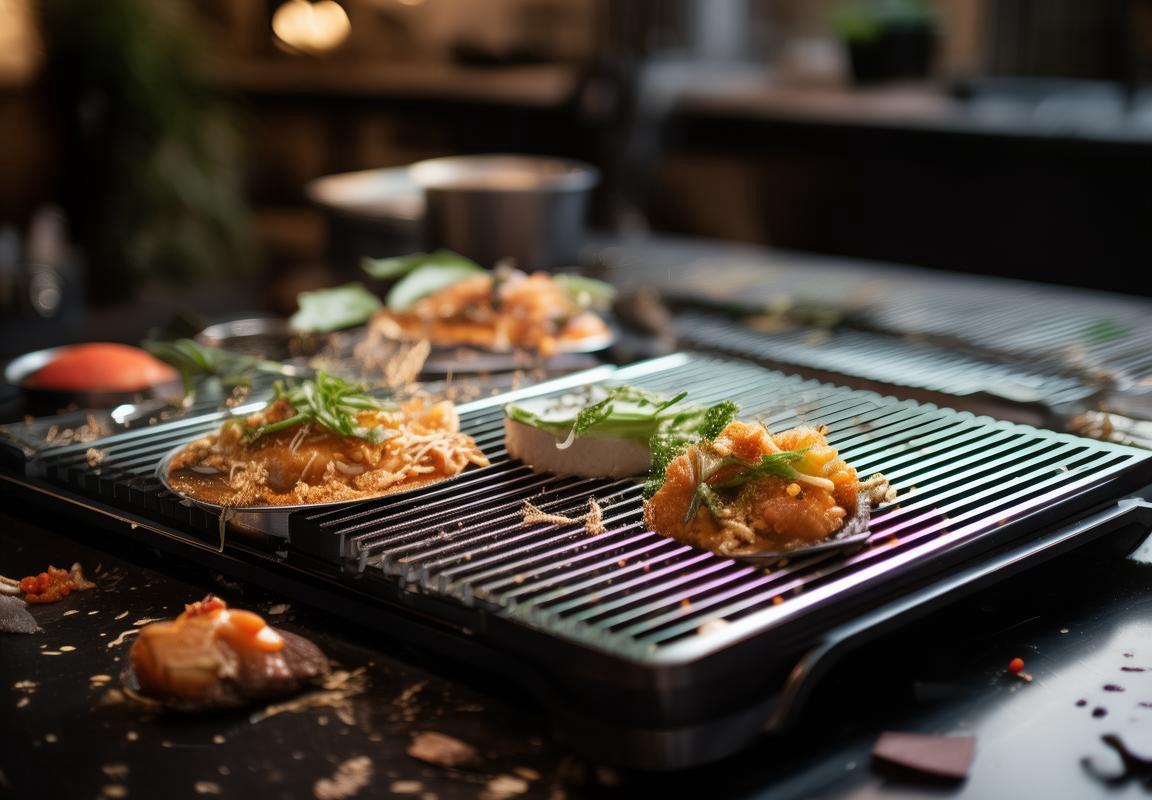
Market Trends and Consumer Preferences
In the ever-evolving landscape of kitchen appliances, contact grills have emerged as a popular choice for both professional chefs and home cooks. These compact cooking devices offer a unique method of grilling that combines the convenience of a countertop appliance with the satisfaction of outdoor grilling. Let’s delve into the latest market trends and consumer preferences shaping the contact grill industry.
The surge in health consciousness has led to a demand for healthier cooking methods, and contact grills fit this trend perfectly. With their ability to cook with minimal oil, they cater to those looking to reduce their fat intake without compromising on flavor. This shift towards healthier eating habits is a driving force behind the increasing popularity of contact grills.
Modern consumers are gravitating towards smart kitchen gadgets that not only simplify cooking but also offer convenience and efficiency. Contact grills often come with features like temperature control, which allows users to achieve precise cooking temperatures, ensuring that their food is cooked to perfection. The integration of technology in kitchen appliances is a significant trend that is influencing the contact grill market.
Eco-friendly and sustainable products are becoming more sought after, and the contact grill industry is responding with energy-efficient models. These eco-conscious appliances not only reduce the carbon footprint but also align with the values of environmentally aware consumers. The emphasis on sustainability is a key factor in the design and marketing of contact grills.
Customization is another trend that is reshaping the market. Consumers are no longer satisfied with one-size-fits-all products; they want appliances that cater to their specific needs and preferences. This has opened up opportunities for custom contact grill manufacturers to create unique, tailored solutions that stand out in a crowded market.
The convenience factor cannot be overstated. Contact grills are designed to be compact and portable, making them ideal for small kitchens, apartments, or even outdoor activities like camping or tailgating. The ease of use and the ability to grill almost anywhere is a major draw for consumers who value flexibility in their cooking options.
Safety is a paramount concern for any kitchen appliance, and contact grills are no exception. With features like non-stick surfaces, easy-to-clean designs, and safety locks, these grills are becoming more appealing to families and individuals who prioritize safety in their cooking routines.
The rise of social media and online reviews has also had a significant impact on consumer preferences. As more people turn to platforms like Instagram and YouTube for cooking inspiration, they are influenced by the aesthetics and functionality of kitchen appliances. Contact grills with sleek designs and innovative features are more likely to catch the eye of potential buyers.
Demographic shifts are also influencing market trends. For instance, the aging population may prefer appliances that are easy to handle and maintain, while younger consumers might be drawn to grills that offer a variety of cooking options and can be integrated with smart home systems.
In the realm of flavors, there is a growing interest in international cuisines, which has led to a demand for contact grills that can handle a range of cooking techniques, from searing steaks to grilling vegetables. This diversity in cooking styles is a reflection of the globalized world we live in and is shaping the types of contact grills that manufacturers are producing.
Lastly, the rise of health-conscious fast-casual dining has had a ripple effect on the contact grill market. As consumers seek quick, healthy meals at home, contact grills provide a solution that allows them to enjoy a homemade, grilled meal without the need for extensive cooking skills or time.
In summary, the contact grill market is influenced by a multitude of factors, including health trends, technological advancements, environmental concerns, customization desires, convenience, safety, aesthetics, demographic changes, and the pursuit of diverse flavors. Understanding these trends and consumer preferences is crucial for manufacturers looking to succeed in this dynamic industry.
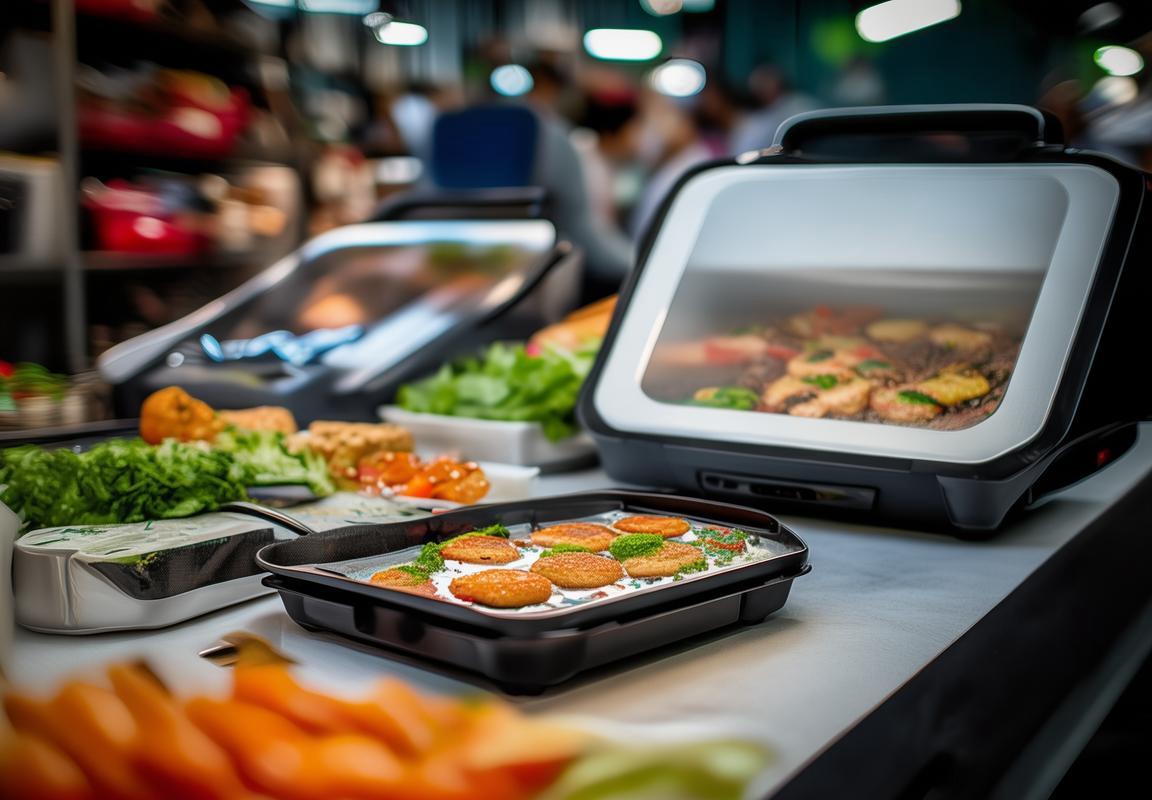
Innovation in Contact Grill Design
In recent years, the contact grill market has seen a surge in innovation, with manufacturers pushing the boundaries of design to cater to consumer needs and preferences. This section delves into the various aspects of innovation in contact grill design.
Grill Surface TechnologyThe surface of a contact grill is its most critical component, as it directly affects the cooking process and the quality of the food. Innovations in grill surface technology have led to the development of non-stick coatings that are more durable and heat-resistant than ever before. Some high-end models now feature advanced coatings that not only prevent sticking but also promote even heat distribution, ensuring that food is cooked to perfection.
Smart Temperature ControlOne of the standout innovations in contact grill design is the integration of smart temperature control systems. These systems allow users to set and maintain precise temperatures, ensuring that delicate foods like fish and vegetables are cooked gently without overcooking. Some models now come with digital displays and programmable settings, making it easier for users to achieve their desired cooking results.
Spatula and Fork Friendly GrillsTraditionally, contact grills have been challenging to use with utensils due to their non-stick surfaces. However, manufacturers have introduced designs that are more spatula and fork-friendly. The edges of the grill plates are now more rounded, reducing the risk of utensils catching on the surface. This innovation has made it more convenient for users to flip and serve their food without worrying about damaging the grill.
Multiple Cooking FunctionsModern contact grills are not just for grilling; they offer a variety of cooking functions. Innovations in design have allowed for the addition of features like searing, sautéing, and even baking. Some models can even be used as a sandwich press or a panini maker, offering a versatile cooking experience that can replace multiple kitchen appliances.
Safety FeaturesSafety has always been a top priority in kitchen appliance design, and contact grills are no exception. New safety features include automatic shut-off mechanisms that activate if the grill is left unattended for too long, preventing potential fires. Some models also come with cool-touch handles and non-slip bases, making them safer to use and more stable on countertops.
Design AestheticsAesthetics play a significant role in consumer purchasing decisions, and contact grill manufacturers have recognized this. New designs feature sleeker profiles, modern colors, and even customizable elements like interchangeable grill plates and handles. These aesthetic improvements not only enhance the look of the grill but also allow for personalization, making it a statement piece in the kitchen.
Cooking EfficiencyEfficiency is a key factor in the design of contact grills. Innovations in heat retention and distribution have resulted in faster cooking times, which is particularly appealing to busy individuals or those looking to reduce their cooking time. Some grills now come with rapid preheat capabilities and efficient heat recovery systems, ensuring that food is cooked quickly and evenly.
Eco-friendly MaterialsAs environmental concerns grow, manufacturers are increasingly focusing on sustainability. Contact grills are now being made with eco-friendly materials, such as recycled stainless steel and biodegradable components. These changes not only reduce the environmental impact but also appeal to consumers who are conscious of their carbon footprint.
Interactive Cooking ExperienceThe latest contact grills are not just cooking appliances; they are interactive devices. Many models now come with companion apps that provide recipes, cooking tips, and even live cooking demonstrations. These apps can also sync with the grill to control temperature and cooking times, offering a more personalized and engaging cooking experience.
In conclusion, the design of contact grills has evolved significantly, with a focus on enhancing cooking performance, user safety, and aesthetic appeal. These innovations reflect the changing needs and preferences of consumers, who are looking for versatile, efficient, and sustainable kitchen appliances. As technology continues to advance, we can expect to see even more innovative designs in the future.
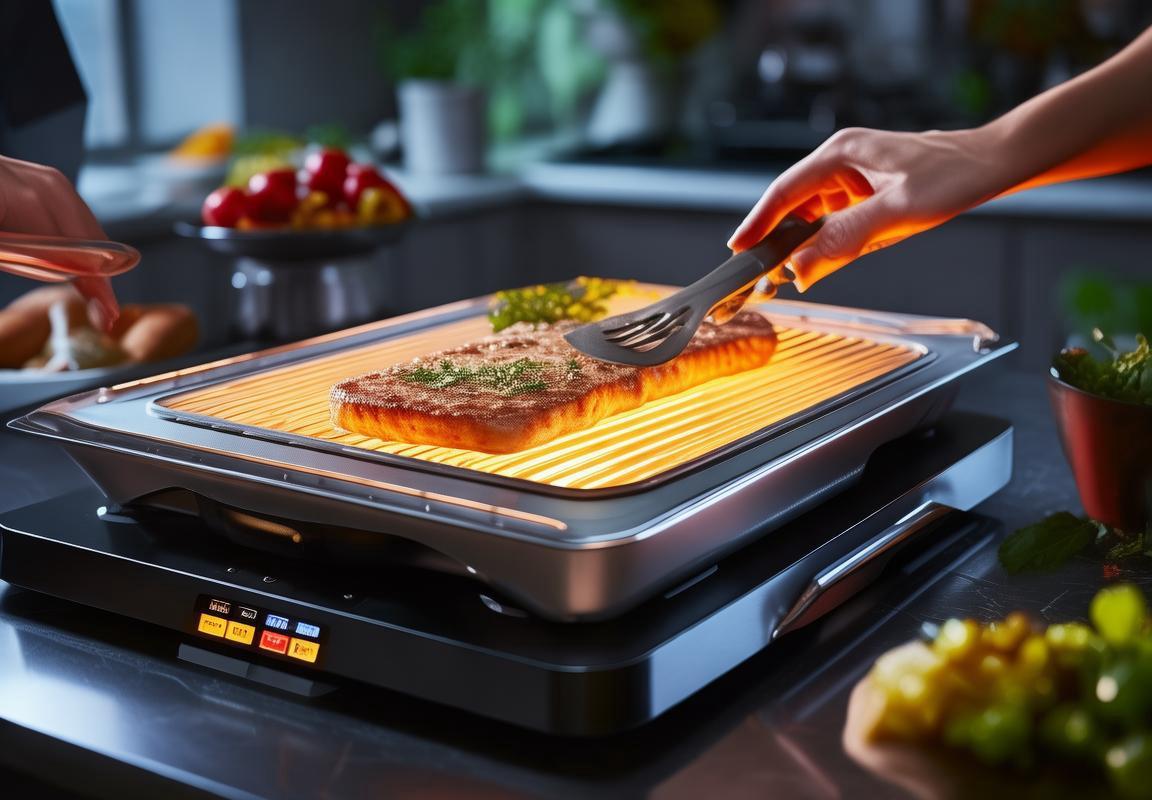
Case Studies: Success Stories with Custom Manufacturers
In the world of custom contact grill manufacturing, there are several success stories that highlight the transformative power of tailored solutions. From small startups to established brands, these case studies showcase how custom manufacturers have played a pivotal role in bringing innovative and market-driven products to life. Here are a few such stories:
A small, family-owned kitchen appliance company in Germany was struggling to find a competitive edge in a crowded market. They approached a custom manufacturer with a vision for a unique contact grill that combined the ease of use of a traditional grill with the convenience of an indoor cooking option. The manufacturer worked closely with the company, integrating features like adjustable heat settings, non-stick surfaces, and innovative temperature control systems. The result was a hit with consumers, who appreciated the versatility and ease of cleaning the custom grill, propelling the company to new heights in the market.
A large American outdoor equipment brand wanted to expand its product line to include a high-end contact grill that could cater to the demands of professional chefs and outdoor enthusiasts alike. They partnered with a custom manufacturer known for its precision engineering and cutting-edge technology. The collaboration resulted in a grill that not only offered superior heat distribution but also featured a sleek, modern design and durable construction. The grill was showcased at trade shows and quickly became a sought-after item, enhancing the brand’s reputation for quality and innovation.
A well-known European health-conscious brand was looking to introduce a line of eco-friendly kitchen appliances. They turned to a custom manufacturer that specializes in sustainable materials and energy-efficient designs. The custom manufacturer crafted a contact grill that was made from recycled stainless steel and included a solar-powered option for outdoor use. The grill not only met the brand’s environmental standards but also resonated with consumers who were looking for sustainable cooking solutions. The product line was a significant success, with the custom manufacturer receiving praise for its commitment to sustainability.
A startup in the UK specializing in smart kitchen gadgets sought to create a contact grill that could be controlled via a smartphone app. They partnered with a custom manufacturer that had experience in integrating IoT (Internet of Things) technology into kitchen appliances. The result was a grill that allowed users to monitor and adjust temperatures, cooking times, and even receive notifications when the food was ready. The custom grill was a hit among tech-savvy consumers and helped the startup establish itself as a leader in the smart kitchen market.
In another instance, a well-established Italian brand known for its high-quality outdoor cooking equipment wanted to expand its product range with a compact, portable contact grill. They worked with a custom manufacturer that could provide the precision needed to create a grill that was both lightweight and robust. The final product was a game-changer for the brand, as it allowed them to cater to a new demographic of consumers who were looking for versatile cooking solutions for picnics, camping trips, and even small patios.
These case studies demonstrate the importance of custom manufacturers in the contact grill industry. They have the expertise to turn innovative ideas into reality, often pushing the boundaries of what is possible in terms of design, functionality, and sustainability. By collaborating with these manufacturers, brands can not only meet consumer demands but also create products that stand out in a crowded market, fostering long-term success and customer loyalty.
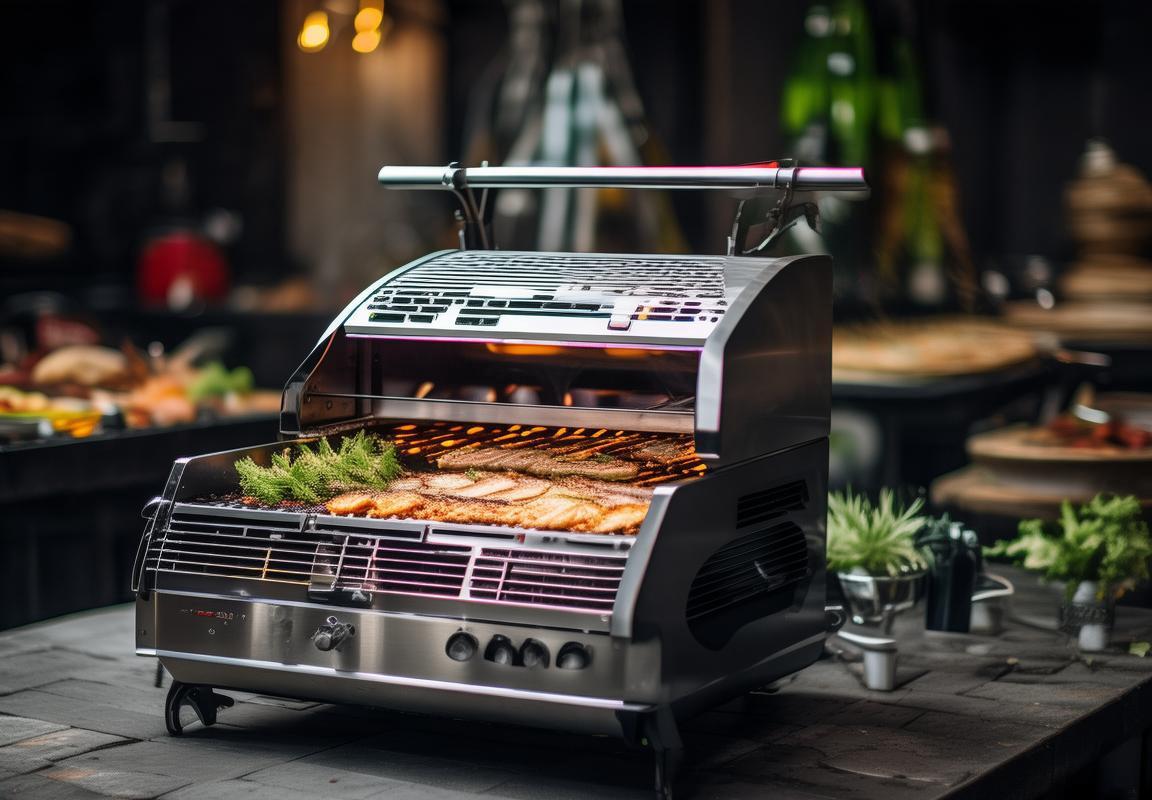
Challenges and Opportunities in the Contact Grill Industry
The contact grill industry has seen its fair share of challenges and opportunities, each shaping the landscape in unique ways. Here’s a closer look at some of the key hurdles and prospects that manufacturers and consumers alike face.
Innovation and Competition Fueling AdvancementsThe rapid pace of innovation in the contact grill industry is both a challenge and an opportunity. Brands must continuously improve their products to keep up with consumer expectations and the fierce competition. This push for innovation has led to a surge in features like adjustable heat settings, non-stick surfaces, and even Wi-Fi connectivity, enhancing the cooking experience.
Regulatory Compliance and Safety StandardsManufacturers face the challenge of adhering to stringent safety and regulatory standards set by governing bodies. Ensuring that contact grills meet these standards is crucial for maintaining consumer trust and avoiding costly recalls. However, meeting these requirements also presents an opportunity to improve product quality and longevity.
Consumer Health and Wellness TrendsThe growing emphasis on health and wellness has had a significant impact on the contact grill market. Consumers are increasingly seeking cooking methods that minimize added fats and calories, leading to a surge in demand for contact grills that offer healthier cooking options. This trend offers manufacturers the chance to cater to these preferences with low-fat cooking surfaces and energy-efficient designs.
E-commerce and Direct-to-Consumer SalesThe rise of e-commerce and direct-to-consumer sales channels has both challenges and opportunities for contact grill manufacturers. While it allows for wider market reach, it also means navigating complex logistics and customer service. On the flip side, these channels can provide valuable customer insights and a direct line to market trends, enabling more agile product development.
Globalization and Supply Chain DisruptionsThe globalization of the contact grill industry has its perks but also brings its set of challenges. Access to global markets can boost sales, but it also means dealing with fluctuating currency exchange rates and potential supply chain disruptions. The opportunity here lies in diversifying suppliers and building robust supply networks to mitigate risks.
Sustainability and Environmental ConcernsSustainability is a double-edged sword in the contact grill industry. The challenge is to reduce the environmental footprint of manufacturing and transportation without compromising on product quality. This presents an opportunity to invest in eco-friendly materials, energy-efficient production processes, and sustainable packaging, appealing to environmentally conscious consumers.
Technological Integration and Smart CookingThe integration of technology into contact grills, such as Bluetooth connectivity and smart app control, is a challenge in terms of complexity and cost. However, it also opens up a new world of possibilities for personalized cooking experiences and precise temperature control. This technological evolution can differentiate products in a crowded market.
Evolving Demographics and Cultural PreferencesAs demographics shift and cultural preferences evolve, contact grill manufacturers must adapt. Understanding the diverse needs of various consumer segments, from single adults to families, requires market research and product customization. This challenge translates into an opportunity to tap into niche markets and create specialized products.
Consumer Expectations and Product Life CycleConsumer expectations are ever-evolving, demanding constant innovation. The lifecycle of a contact grill product can be short, and manufacturers must be ready to update their offerings to meet these expectations. This cycle of innovation is both a challenge and an opportunity to establish brand loyalty and customer retention.
The contact grill industry is a dynamic field, where challenges and opportunities coexist and often feed into each other. It’s a landscape where strategic planning, agility, and a focus on customer needs can lead to sustainable success.

Conclusion: The Future of Custom Contact Grill Manufacturing
In the ever-evolving landscape of custom contact grill manufacturing, the future holds a blend of challenges and opportunities that are reshaping the industry. As consumer preferences shift and technological advancements push the boundaries, understanding these dynamics is crucial for manufacturers looking to stay ahead. Here’s a glimpse into the future of this dynamic sector.
The rise of health-conscious consumers has spurred a demand for high-quality, easy-to-use cooking appliances. Contact grills, known for their ability to sear food while locking in flavors, are perfectly positioned to cater to this trend. However, the industry faces the challenge of balancing this demand with the need for sustainable and eco-friendly practices.
Custom manufacturers are at the forefront of this shift, offering tailored solutions that not only meet but also anticipate market needs. They’re not just producing grills; they’re crafting innovative appliances that can stand out in a crowded marketplace. One such opportunity lies in the integration of smart technology, allowing users to control their grills remotely and monitor cooking times with precision.
Another challenge is the need for continuous innovation in design and functionality. As consumers seek more from their appliances, manufacturers must explore new materials, heating technologies, and ergonomic features. For instance, the introduction of non-stick coatings that are free from harmful chemicals has gained traction, reflecting a broader shift towards safer, more sustainable products.
Case studies show that successful manufacturers are those who can adapt to these changes swiftly. They invest in research and development to create unique features that set their products apart. A prime example is the integration of induction cooking elements, which not only offer faster and more even heating but also reduce energy consumption.
The global market for contact grills is expanding, with Europe and America leading the charge. In Europe, the trend towards outdoor living and the popularity of al fresco dining have fueled demand for high-quality grilling solutions. Meanwhile, in America, the convenience factor and the rise of the “foodie” culture have made contact grills a must-have kitchen appliance.
Despite the growth, the industry must navigate regulatory hurdles and safety standards. Custom manufacturers must ensure their products comply with various certifications, which can be both a challenge and an opportunity. The certification process forces companies to adhere to high-quality standards, enhancing consumer trust and brand reputation.
Looking ahead, the future of custom contact grill manufacturing hinges on sustainability. As environmental concerns grow, manufacturers are under pressure to reduce their carbon footprint. This could mean sourcing materials from renewable resources, improving energy efficiency, and designing products that are easier to recycle or compost.
Collaborations with suppliers and raw material providers are becoming increasingly important. By working closely with these partners, manufacturers can develop greener production processes and create more sustainable products. For instance, the use of recycled plastics and sustainable metals is becoming more common, reflecting a broader commitment to environmental responsibility.
The rise of e-commerce has also opened new doors for contact grill manufacturers. Online platforms allow businesses to reach a wider audience and offer personalized shopping experiences. Customization options, such as choosing grill size, material, and features, are becoming standard, allowing customers to create a product that perfectly fits their needs.
In the realm of technology, virtual reality (VR) and augmented reality (AR) are poised to revolutionize the way customers interact with contact grills. By using these technologies, manufacturers can provide immersive product demonstrations, allowing customers to visualize the product in their own kitchen before purchasing.
The future also holds promise for personalized marketing strategies. With the help of data analytics, manufacturers can tailor their marketing efforts to specific consumer segments, offering targeted promotions and services. This level of personalization can enhance customer loyalty and drive sales.
In conclusion, the future of custom contact grill manufacturing is bright but not without its challenges. As the industry adapts to changing consumer preferences, technological advancements, and environmental concerns, successful manufacturers will be those who can innovate, collaborate, and remain agile. The path ahead is filled with opportunities to create products that not only meet but exceed customer expectations, while also contributing to a more sustainable and technologically advanced world.